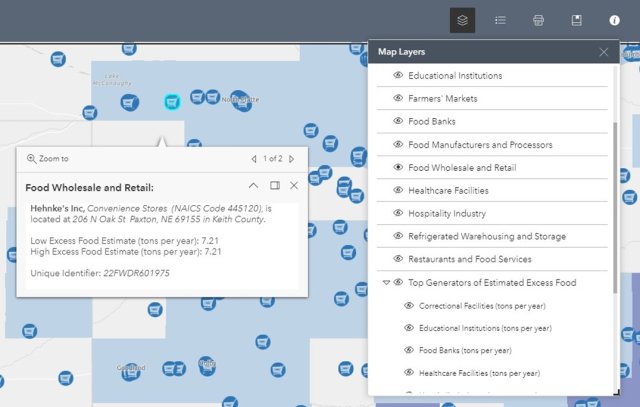User Guide for the Excess Food Opportunities Map
The U.S. EPA Excess Food Opportunities Map supports nationwide diversion of excess food from landfills. The interactive map displays the locations of over 960,000 potential industrial, commercial, and institutional excess food generators, over 200 communities with residential source separated organics programs, roughly 600 refrigerated warehousing and storage facilities, and almost 15,000 potential recipients. Learn more about this map and its uses.
Below are tips about how to use the map and generate commonly requested views.
- Overview of Map Icons and Tools
- Creating Map Views
- Viewing and Filtering Establishment-Level Data
- Download Data
Overview of Map Icons and Tools
The map landing page displays the following icons which correspond to tools for using the map. Click on the icons to navigate, select different views, and display excess food generators and recipients across the nation.
| Icon Image | Description of Tool |
|---|---|
|
|
Basemap gallery: Choose from a variety of base maps that provide context for your map view (e.g., topographic, aerial, street). |
|
|
Search: Enter an establishment name, a physical address, city, state or ZIP code to adjust the map view to an area of interest. |
|
|
Home (Default Map View): Reset the map to view the entire nation. |
|
|
Find My Location: Zoom to your location on the map. |
|
|
Map Layers: View full list of map layers that can be turned on and off. View map layers and icons that are currently selected. Toggle layers on and off. |
|
|
Near Me: Choose a location or region of interest by dropping a pin or outlining an area and specifying a radius. |
|
|
Legend: View the complete list of layers and their icons/colors that are currently activated. |
|
|
Print: Print the current map view in a variety of formats and layouts. |
|
|
Bookmarks: Quickly navigate to preloaded specified regions of the country. |
|
|
About: Learn more about the map, including where to download data. |
Create Map Views
View Generators
Generators appear as colored icons on the map. Each generator type has a different icon (e.g., blue grocery carts indicate food retailers and wholesalers). Top generators can be selected and displayed separately and appear as colored dots on the map (view the images below).
- Navigate to a region of interest using the Bookmarks, Search, or Near Me tools. You can also use the +/- buttons to zoom in and out, click and hold the map to pan, and double click on the map to zoom in.
- Select layers from the Map Layers list to make them appear/activate as icons in the map by clicking on the eye icons (find examples just below). Click the Legend tab to view the complete list of selected layers and their icons/colors.


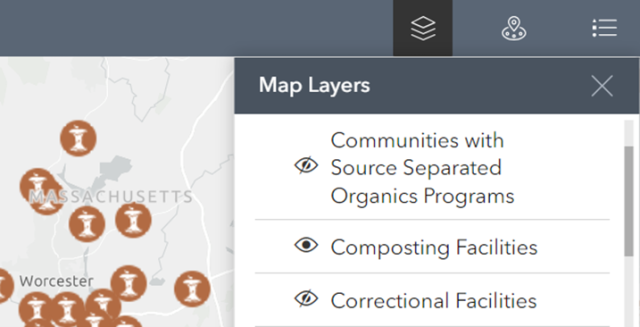
Figure 2: Activating the Layers Widget Note: The Top Generators eye icon must be selected in addition to the generator type(s) for top generators to display on the map.

Figure 3: Visibility for Top Generators Group of Layers 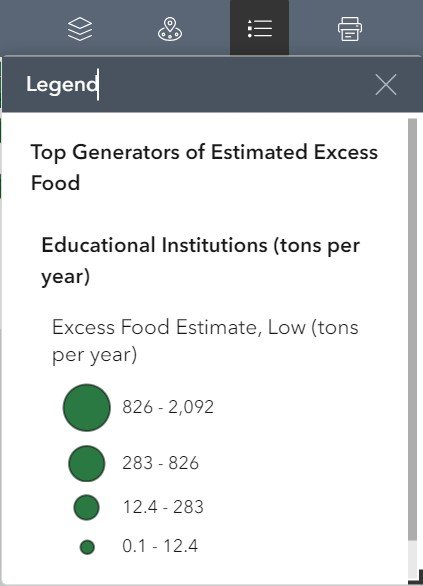
Figure 4: Top Generators Legend Example - Click on each generator icon in the map to open a pop-up box that provides establishment-specific information for the generator selected.
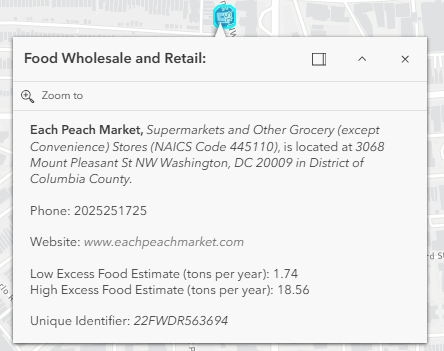
View Recipients

Recipients are point mapped and mapped at the ZIP code and county levels. Individual recipients appear as colored icons on the map, as do generators. When viewing recipients by ZIP code, darker green areas indicate higher recipient densities. When viewing recipients by county, darker purple areas indicate higher recipient densities.
- Navigate to a region of interest using the Bookmarks, Search, or Near Me tools. You can also use the +/- buttons to zoom in and out, click and hold on the map to pan, and double click on the map to zoom in.
-
Select layers from the Map Layers list to make them appear/activate as icons in the map by clicking the eye icons (find examples just below). Click the Legend tab to view the complete list of layers and their icons/colors that are currently activated.


- When viewing recipients by ZIP code or county, click on any colored area to open a pop-up box showing the count of recipients by type for that ZIP code or county. When viewing recipients by type (i.e., point mapped), click on each icon to open a pop-up box that provides facility-specific information.
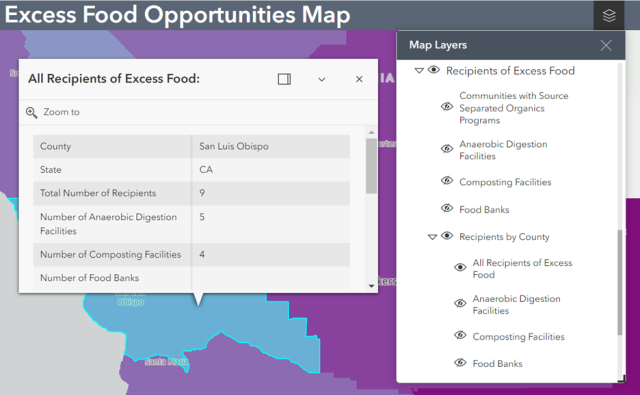
Figure 6: Example of a Pop-Up for All Excess Food Recipients
View USDA Layers
Select the USDA Food Assistance or USDA State Food Insecurity layers from the Map Layers list to make them appear/activate in the map by clicking on the eye icons (find examples just below). If activated in combination with excess food generator or recipient layers, the USDA layers will always appear underneath the excess food generators and recipients.


Click the Legend tab to view the currently active layers and their colors/shading.
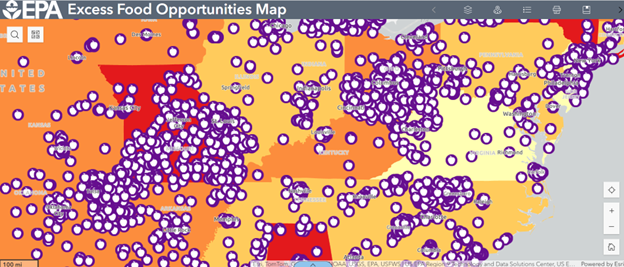
View and Filter Establishment-Level Data
Navigate to a region of interest using the Bookmarks, Search, or Near Me tools. You can also use the +/- buttons to zoom in and out, click and hold on the map to pan, and double click on the map to zoom in.
Utilizing the Attributes Table to view establishments for recipients and generators is very simple. Follow the instructions below to navigate the table widget and create custom lists of generators and recipients.
View a List of Establishments
Open the attribute table by clicking the arrow at the bottom middle of the screen (find example just below). Choose a generator, recipient, or other layer from the drop-down menu. The table will automatically filter to show only establishments that are in the map view.

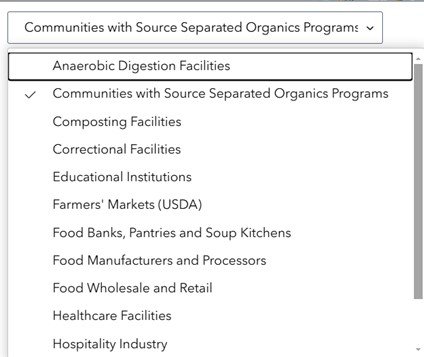
Note: Selecting features in the map will select them in the table and vice versa.
View Selected Records
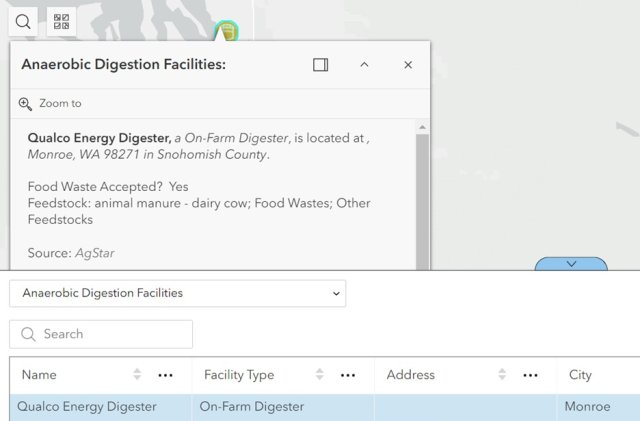
- Select a layer from the Map Layers list to view it on the map. Click on an establishment icon. A pop-up will appear, and the record will be selected in the table.
- Open the attribute table and click the Show Selection button to view only the selected records. Click the same button again to Show All records. Buttons shown below in respective order.


Create Custom List Using a Filter
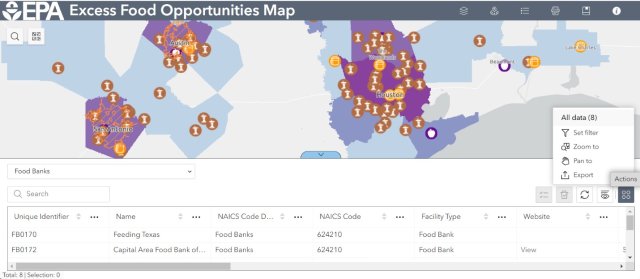
- Navigate to a region of interest, open the attribute table and choose the desired data layer from the drop-down menu. If the table does not populate immediately, select the circling arrows icon to refresh (find example just below).

- There two options for filtering the data in the table. Use the Search bar below the layer drop-down menu to search for a word or phrase, for example, the name of a county. Reminder: the table will only display establishments within the current map view. You may need to adjust the map view to capture the full area of interest.
- You can also use the Set Filter function of the attribute table. Example images are below. Click on the Actions button in the table and select Set Filter. Click Add to create a new clause. Put in the desired criteria for your search, such as county, state, or ZIP code. Toggle on the filter to populate the table.
- The filtered establishments will also appear in the map. For example, if you filtered for anaerobic digestion facilities in Washington state, no facilities will appear on the map outside of Washington. Go back to Actions and Set Filter to turn off the filter or edit or delete clause(s).
- Refer to the Download Data instructions below for how to export this custom list.


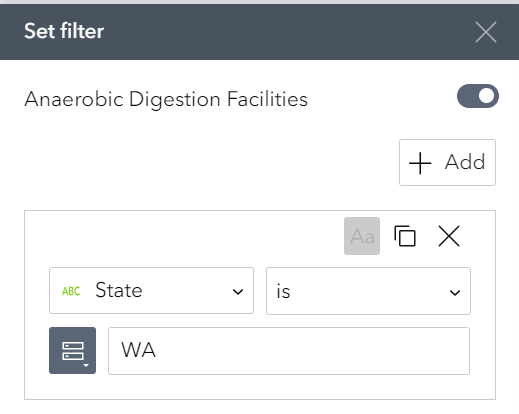
Note: To sort the listed establishments, click on any column header and choose Sort Ascending or Sort Descending.
Note: To show or hide columns in a table, click Show/Hide Columns (find example just below) to select columns to show or hide.

Create Custom List Based on Radius
The Near Me widget allows you to search for establishments within a certain radius of a point on the map. You can choose the center point and the distance of the radius.
- Navigate to an area of interest on the map, for example by searching for an address or city in the search bar. Activate a data layer of interest.
- Open the Near Me widget and enter a radius length. Select the Point option (left icon under Location) and click on a point on the map – this will be the center of your circle.
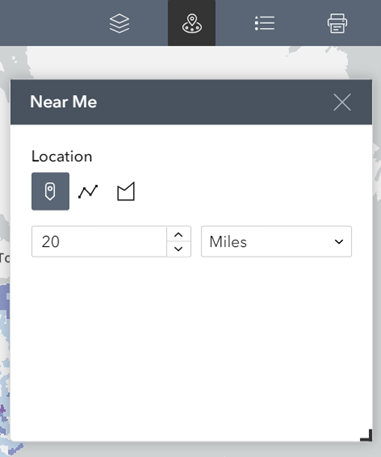
- Open the Attribute Table. Select a data layer from the drop-down menu. The table will display all the establishments of that type within the circle defined by the Near Me widget. Activate the same data layer in the Layers list to view the same establishments in the map as in the table.
- Refer to the Download Data instructions below for how to export this custom list.
- To turn off the radius search on the map, open the Near Me widget and click the trash can icon.
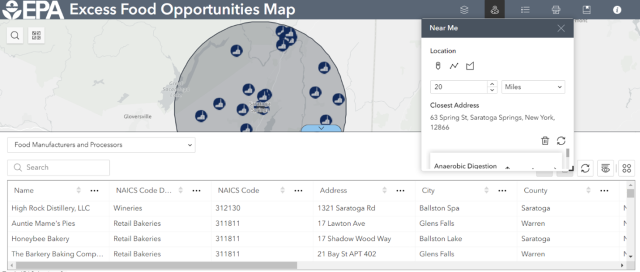
Download Data
There are two ways to download data: (a) download data for individual layers from the map interface into a Microsoft Excel document and (b) download a zip file that provides all data in Microsoft Excel as well as the full geodatabase (compatible with GIS software) from the EPA Environmental Dataset Gateway.
Download Data Directly from the Map into a Microsoft Excel Document
- Open the attribute table by clicking the arrow at the bottom of the screen (refer to the example just below).

- Select the layer/dataset of interest from the drop-down menu. Filter the data from here if desired. Then, click the Actions button (refer to the example just below) in the table, select Export, and choose the desired file format. Select Export to CSV for a spreadsheet that can be opened in Microsoft Excel and similar programs. Only one table can be downloaded at a time. Geodatabase file formats are also available.

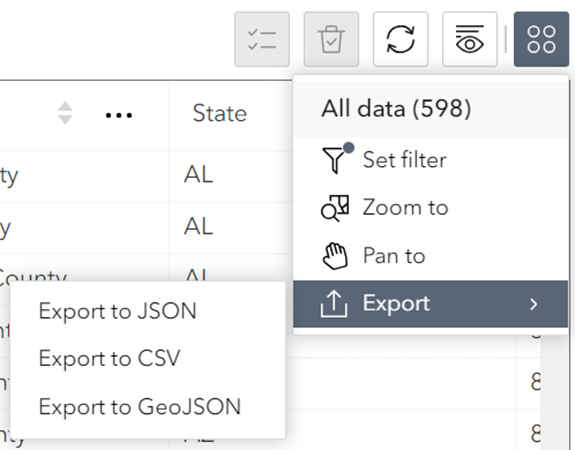
Download Full Dataset
All data is available for download in a single zip file from the map’s Geoplatform. This zip file includes data for all establishments mapped in Microsoft Excel files as well as geodatabase files that can be used to create GIS maps. Use this link to access the dataset and save it to your computer. You may need additional software to view the dataset. Refer to EPA's Free Readers and Viewers webpage.











